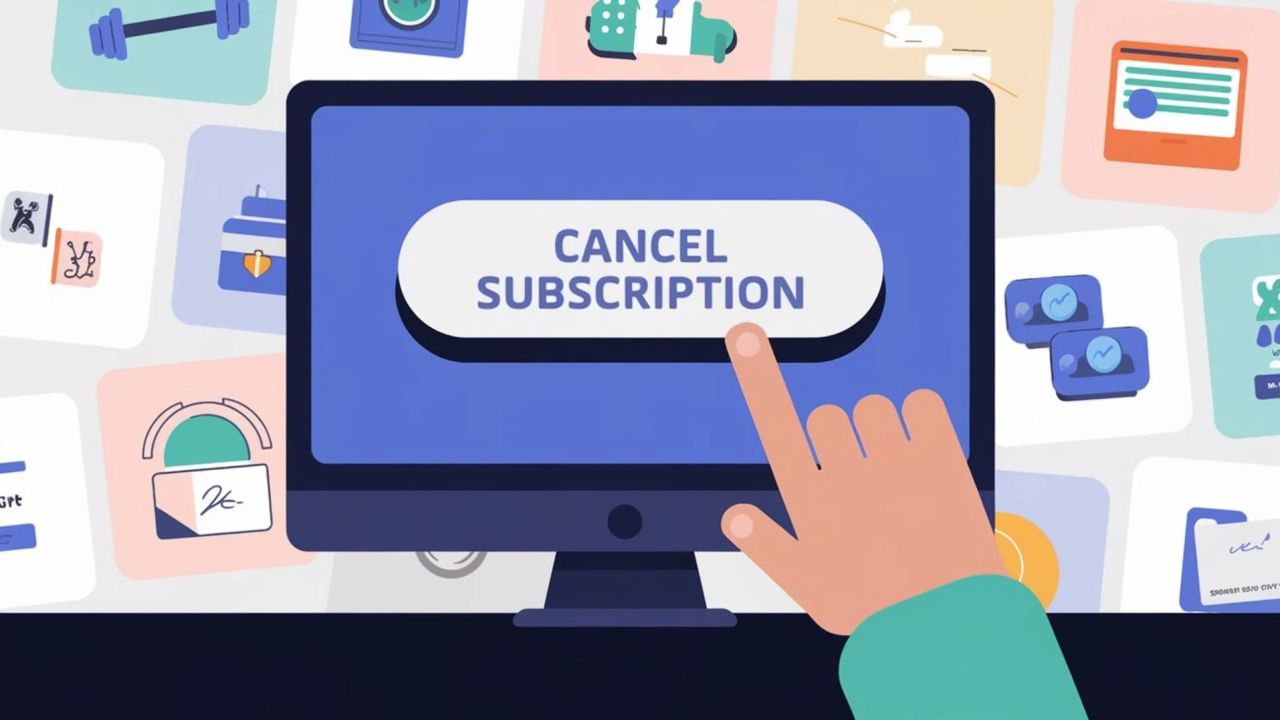Top 5 Tips to Escape Hidden Fees & Avoid Subscription Traps Today!
Discover How to Outsmart Subscription Traps, Stop Hidden Fees, and Easily Cancel Unwanted Services!
Have you ever signed up for something that seemed free but later found yourself being charged? That’s what we call a subscription trap!
These traps are sneaky ways companies get people to sign up for services and keep charging them, often without them even realizing it. But don’t worry, you can avoid these tricky fees by learning how they work and how to protect yourself!
Let’s explore what subscription traps are and how you can stay safe from hidden fees, automatic renewals, and tricky cancellation processes.
What Are Subscription Traps?
Subscription traps happen when companies trick people into signing up for something, only to charge them later with hidden costs or make it super hard to cancel.
These traps can leave you with big surprises when you see your bill! Let’s dive into the sneaky ways these companies get people hooked and how they keep charging.
How Do Subscription Traps Work?
Subscription traps use a lot of clever tricks to make you spend more money without noticing. Here are some of the sneaky tactics they use:
1. Free Trials That Aren’t So Free
Imagine this: you see a new streaming service offering a “free” 30-day trial. It sounds great, right? You sign up and start watching shows. But then, after 30 days, without any warning, you get charged! What happened?
Many companies ask for your credit card info when you sign up for a free trial. They count on you forgetting to cancel before the trial ends. Once it’s over, they automatically start charging you – often at a high price.
This happens a lot with streaming services, fitness apps, and other online platforms. So always remember to set a reminder to cancel before the free trial is up if you don’t want to pay!
2. Hidden Fees That Sneak Up on You
Another way companies trick you is by hiding fees. For example, you might sign up for a fitness app that looks cheap at first. But then, you realize you’re being charged extra for features you didn’t know about! Maybe they charge you for more workout plans or personal coaching, but they didn’t tell you when you signed up.
Hidden fees add up quickly, and before you know it, you’re paying much more than you expected. It’s always important to check for extra costs before signing up for anything!
3. Difficult Cancellations
Some companies make it super hard to cancel your subscription. They might hide the cancellation button deep in their website, or they may ask you to send a letter instead of canceling online. Imagine having to write and mail a letter just to cancel a magazine subscription!
By making the cancellation process complicated, these companies hope you’ll give up and just keep paying. But don’t let them win! Always look for clear cancellation instructions before signing up for any service.
The Legal Protections You Have
Luckily, there are laws in place to help protect people from these sneaky traps. In the USA, there are a few important rules that can help:
1. Cooling-Off Periods
The Federal Trade Commission (FTC) has a rule that gives people three days to cancel certain contracts. This is called a “cooling-off period.”
If you sign up for something and change your mind, you have three days to cancel and get your money back. But this rule only applies to certain things, like buying something from a salesperson who comes to your door. Unfortunately, it doesn’t always cover online subscriptions.
2. Disclosure Requirements
The FTC has another rule requiring companies to disclose all the details of what they’re signing up for, including fees, terms, and cancellation policies. If they fail to provide this information, they can face legal trouble! If you believe a company wasn’t transparent about everything upfront, you can report it to the FTC.
Should you encounter issues with a subscription, filing a complaint with the FTC or your state’s consumer protection agency could help resolve the situation and may even lead to getting your money refunded.
How to Protect Yourself from Subscription Traps
Now that you know the sneaky tricks and the laws, let’s talk about how you can stay safe and avoid subscription traps. Here are some easy steps you can follow:
1. Read the Fine Print
Before you sign up for anything, always read the terms and conditions. Look for any mention of fees, automatic renewals, and how you can cancel the service. It might seem boring, but it can save you from a lot of trouble later on.
2. Use a Credit Card
When you sign up for a service, it’s usually better to use a credit card instead of a debit card. Credit cards offer better protection against fraud, and it’s easier to dispute charges if something goes wrong. Always keep an eye on your monthly statements to make sure you’re not being charged for something you didn’t want.
3. Set Reminders for Free Trials
Free trials can be great, but only if you remember to cancel before they end! A simple trick is to set a reminder on your phone or calendar a few days before the trial ends. That way, you can decide if you want to keep the service or cancel it before they start charging you.
4. Use Subscription Tracking Apps
Did you know some apps can help you manage all your subscriptions? These apps can keep track of when your free trials are ending and even help you cancel subscriptions you don’t want anymore.
Some popular apps for this are Truebill and Trim. These tools can save you from paying for services you forgot about!
5. Keep Records
Always keep a record of the subscription details, such as emails, receipts, and terms. If something goes wrong and you’re charged unexpectedly, having these records can help you dispute the charges.
What to Do If You Get Stuck in a Subscription Trap
Even if you’re careful, sometimes you might still get caught in a subscription trap. But don’t worry, here’s what you can do:
1. Contact the Company
The first thing to do is reach out to the company and ask them to cancel the subscription and refund your money. Be polite but firm. If they don’t help, don’t give up!
2. File a Complaint
If the company refuses to help, you can file a complaint with the FTC or your state’s consumer protection agency. You can also reach out to the Better Business Bureau (BBB). These organizations can help investigate and solve the issue.
3. Consider Legal Action
If the subscription charges are high and you can’t resolve the problem, you might want to consider legal action. Some people join class-action lawsuits, where a group of people works together to sue a company for deceptive practices. If you’re not sure how to do this, a consumer protection agency can help guide you.
A Real-Life Example: The Case of the Sneaky Subscription Box
Here’s a true story of how people fought back against subscription traps. A company that sold subscription boxes promised people free boxes, but they secretly charged them for more boxes every month. People didn’t know they were being charged until they checked their credit card bills.
A group of customers got together and filed a class-action lawsuit. In the end, the company had to give everyone a refund, and they had to change their advertising practices so people would know exactly what they were signing up for. This is a great example of how people can stand up to deceptive companies and win!
Tips for Avoiding Subscription Traps in the Future
It’s easy to avoid subscription traps if you know what to look for. Here are some final tips to keep in mind:
- Beware of Free Trials: Always check if a free trial turns into a paid subscription. Set a reminder to cancel if you’re not interested.
- Read Terms and Conditions: Before you sign up, make sure you read all the details about fees, renewals, and cancellations.
- Use Credit Cards: Credit cards give you better fraud protection and make it easier to dispute unauthorized charges.
- Monitor Your Statements: Check your bank or credit card statements regularly to spot any charges you didn’t expect.
- Use Subscription Management Tools: Consider using an app that tracks your subscriptions and reminds you about renewals and fees.
Conclusion: Stay Smart and Stay Safe!
Subscription traps can be tricky, but now you know how to avoid them. By being aware of sneaky tactics, reading the fine print, and keeping track of your subscriptions, you can save yourself from unwanted charges. Stay informed and always take action if something doesn’t seem right.
Now that you’re a subscription expert, share these tips with your friends and family! Help them avoid falling into the same traps. Have you ever been caught in a subscription trap? Tell us your story in the comments below!








